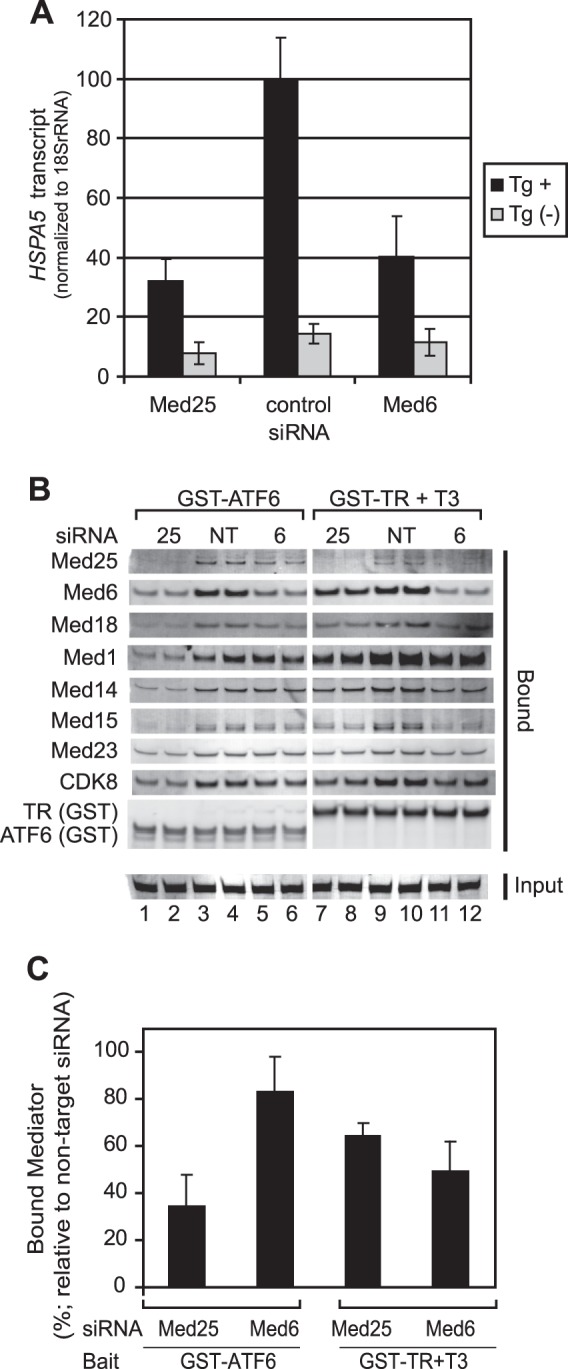FIGURE 4.

siRNA-mediated MED25 depletion interferes with the ATF6α-Mediator interaction and with ER stress-induced HSPA5 expression. A, siRNA-mediated depletion of MED25 and MED6 attenuates HSPA5 expression. RNA was purified from multiple independent cultures grown in parallel with those used in the experiment shown in panels A and B. Thapsigargin (Tg) was used to induce ER stress. HSPA5 mRNA from untreated and Tg-treated cells was assayed by qPCR and normalized to 18 S rRNA. Values shown in the graph are the average of three biological replicates; error bars represent the S.D. B, effect of depleting MED25 or MED6 on binding of Mediator to GST-ATF6α-AD or liganded GST-TR. Glutathione-Sepharose chromatography was carried out using 12 pmol of GST-ATF6α-AD or liganded GST-TR and 40 μl of nuclear extracts prepared from cells that had been treated with non-targeting siRNA or siRNAs against MED25 or MED6. Proteins were analyzed by Western blotting using the indicated primary antibodies and detected using appropriate secondary antibodies conjugated to IRDye700DX or IRDye800. IRDye- labeled secondary antibodies were detected using a Li-Cor Odyssey infrared imaging system. Duplicate lanes show results obtained in two independent purifications from the same extract. C, quantitation of data shown in panel A. The intensities of bands corresponding to MED1, MED14, MED15, MED18, andMED23 were determined using Odyssey infrared imaging system application software version 3.0 (Li-Cor) in the Median background mode. Relative recovery of Mediator in cells treated with MED25 or MED6 siRNA was calculated by first determining the % recovery of each subunit in bound fractions from siRNA-treated cells relative to the average of the same subunit in fractions from cells treated with non-targeting siRNA and then averaging the values obtained for all subunits; error bars are S.D.
